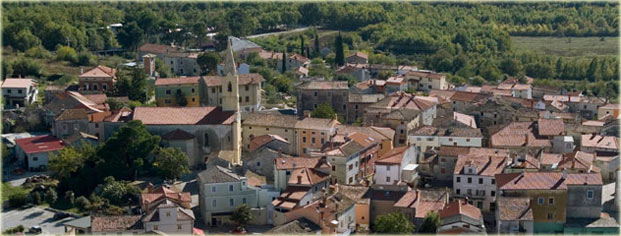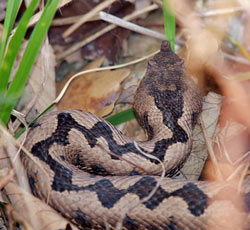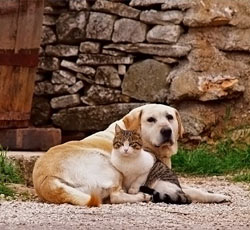-
Brtonigla (włoskie Verteneglio) - wieś w pobliżu miasta Buie, jest siedzibą gminy. Znajduje się on w pagórkowatym krajobrazie, na 141m wzgórzu, na drodze Buje - Novigrad. Oferuje to, co najlepsze w śródlądowej Istrii - naturalne parki i jaskinie, malownicze wzgórza, bogatą florę i faunę, a znakomicie zachowane małe kościoły i kaplice świadczą o jej przeszłości. Mieszkańcy zajmują się tu rolnictwem na żyznej ziemi, szczególnie ogrodnictwem, winiarstwem, winem (droga winna), a ostatnio rozwijającą się turystyką wiejską.
Brtonigla (Novigrad, Istria)
Brtonigla, Travel Guide for holidays in Brtonigla, Istria
Brtonigla – Points of interests
 The area was inhabited in prehistoric times (fortified villages) and even Brtonigla had hillfort feature. There are many remains from the Roman period as graves, remains of buildings. In the Middle Ages it was founded the Monastery of S. Martin, around which the settlement was built.
The area was inhabited in prehistoric times (fortified villages) and even Brtonigla had hillfort feature. There are many remains from the Roman period as graves, remains of buildings. In the Middle Ages it was founded the Monastery of S. Martin, around which the settlement was built. In the 1234 the settlement was called Ortoneglo, and had already residents who were immigrants from the County of Pazin. In XIII century Brtonigla belonged to Moscato feudal lords, and in the XIV century came under Venetian rule. As a part of the political plan for the revitalization of unpopulated land in the XV-XVI century a new wave of Dalmatian emigrants settled in Brtonigla. The plague in the XVII century reduced again the number of the population , after which there was a third wave of immigration. The parish church of St. Zeno was built in the Neo-baroque style in 1862 in the place where was an older church from 1480. Other churches are St. Rocco (XIVcentury), the Blessed Virgin Mary Cemetery (XVI century) and All Saints (XIX century).
The vast acres of vineyards and olive groves are surrounded by pathways that lead towards meadows and woods, deep into the centre of nature that lives intact, far away from the modern civilisation. It is also a place where you can find excellent wines and olive oils – many family cellars invite the travellers to discover the authentic power of the local lifestyle.
Photo to buy
| If you want to buy one of teh next photos please send us an e-mail at info@istriasun.com | ||||
 |  | |||